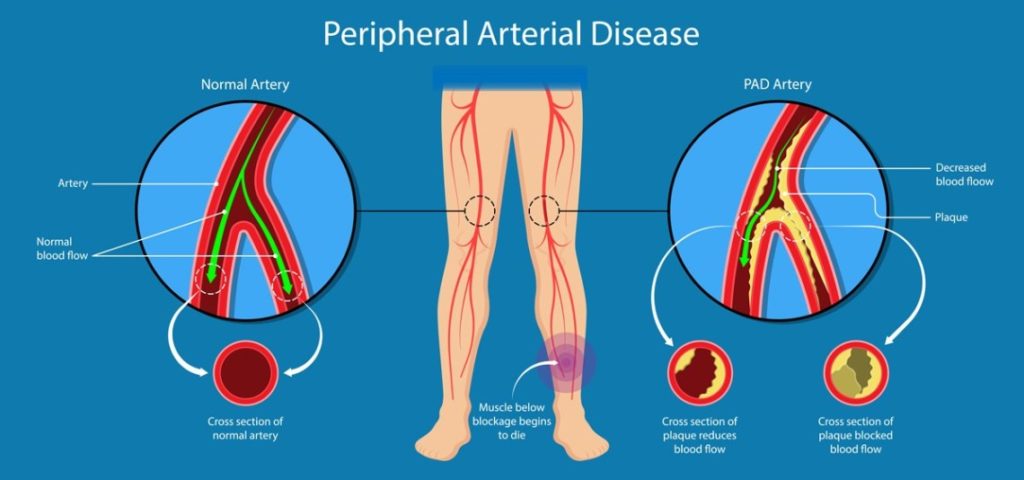- Home
- About Us
- Services
- CT Heart Scan
- Varicose & Spider Veins
- Imaging & Radiology
- Mammograms
- Atrial Fibrillation & Stroke Prevention
- Coronary & Vascular Procedures
- Diagnostic Testing
- Heart Failure Treatment
- Hypertension & Lipid Management
- Hypertrophic Cardiomyopathy Management
- Loop Recorder Procedure
- Prevention of Heart & Vascular Disease
- The Watchman
- Varicose & Spider Veins
- Locations
- Book Your Appointment
- Pay Your Bill
- News
Peripheral Arterial Disease (PAD)
 Peripheral Arterial Disease (PAD)
Peripheral Arterial Disease (PAD)
Peripheral arterial disease (PAD) is a disorder which reduces the blood flow to the extremities and peripheral organs. It is caused by fatty plaque deposition inside the arteries which can result in total blockages of the artery if left untreated.
Approximately over 6.5 million Americans have PAD. Unfortunately, it is an under-diagnosed disorder which can affect people at any age although it is more common in elderly. People with the highest risk of developing PAD, include patients with diabetes, high blood pressure, high blood cholesterol and smoking
The most common symptom of PAD is pain in the legs with walking which gets better with resting. However, 40% of patients may have either no symptoms or atypical symptoms such as aches and pain and cramping. If left untreated, it can result in sores or ulcers in the legs or feet that do not heal. This may ultimately lead to amputation of the legs.
At Cardiovascular institute of San Diego, our experts can provide a comprehensive work up to diagnose and treat this debilitating disease. From preventative screening, to early treatment from risk factor modification, to advanced treatment options such as stenting the arteries to open the vessels of the legs to surgical treatment of severe PAD we are here to help you.

